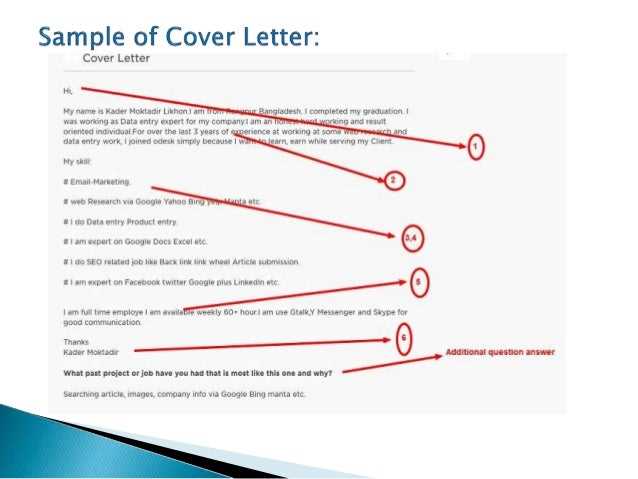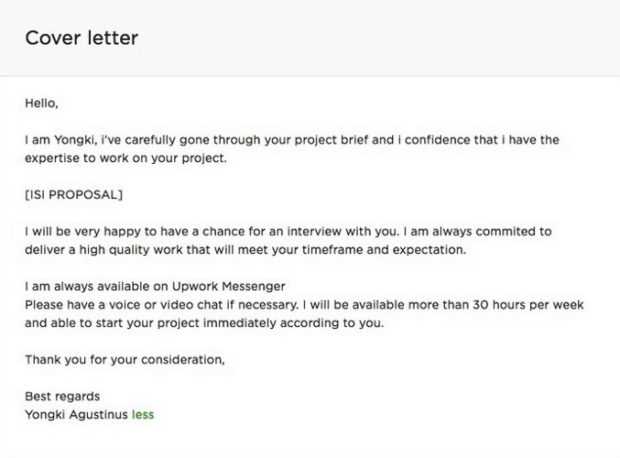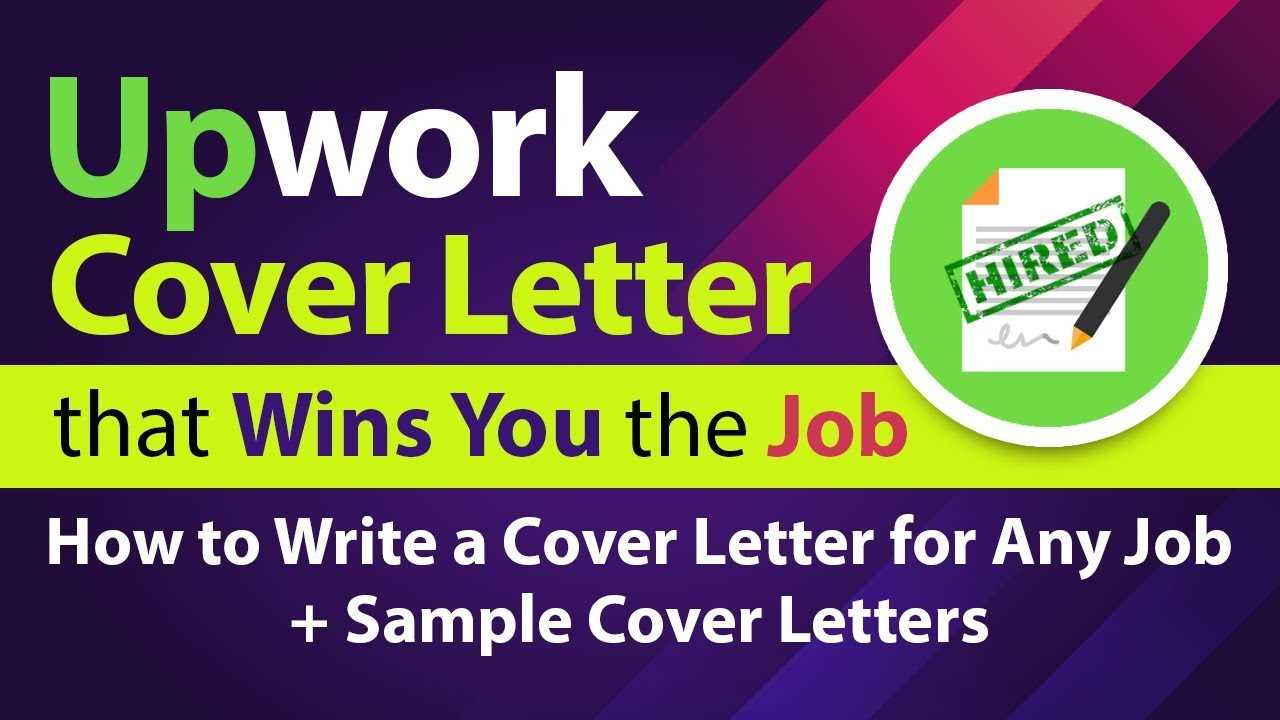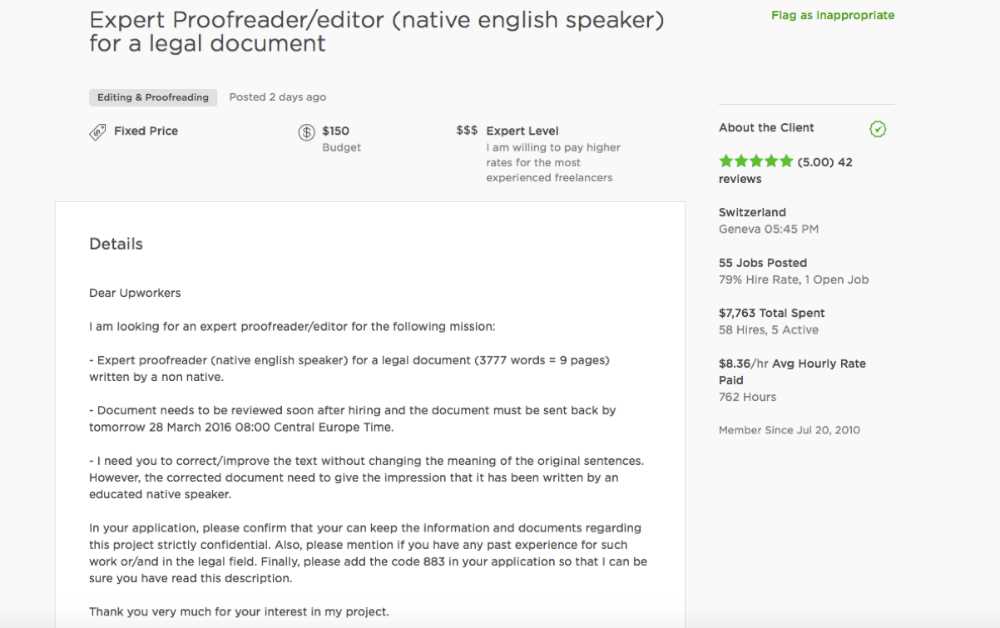Cover letter upwork template

Tailor your cover letter to match the client’s needs. Focus on specific skills or experience that directly address their project requirements. Start by clearly stating why you’re the right fit for the job, mentioning your relevant background and key achievements.
Be concise and avoid unnecessary fluff. Clients appreciate brevity and clarity. Share how your expertise will benefit them and make a connection between your past work and their current project. Include examples that demonstrate how you’ve solved similar problems before.
Close your letter by inviting the client to discuss the project further. A friendly yet professional tone will leave a positive impression and encourage them to reach out. Keep your language confident and focused on the value you bring to the table.
Structuring the Main Body
Begin with a concise and clear introduction to your qualifications. Focus on the skills and experiences that directly relate to the project. Avoid broad statements–get specific. For example, if the job requires expertise in graphic design, mention specific tools like Photoshop or Illustrator, and briefly explain how you’ve used them in similar projects.
Next, demonstrate your understanding of the client’s needs. Refer directly to the job description and address key points. This shows that you’ve read the project details thoroughly and can tailor your work to their specific goals. Avoid generalizations–focus on how your experience aligns with their expectations.
In the following paragraph, explain how your approach will solve their problem. Highlight the steps you will take or the method you will use. Be clear and practical in outlining how you plan to accomplish the task. This part should convey confidence in your ability to deliver results without being overly formal or vague.
Wrap up the body with a call to action. Suggest a follow-up or a time to discuss the project further. Keep this part short and direct, reinforcing your enthusiasm and readiness to get started. Ensure your conclusion leaves a positive, action-oriented impression.
Avoiding Common Mistakes
Proofread your cover letter carefully. Typos or grammar mistakes can ruin the impression you make on a client. Even small errors suggest a lack of attention to detail. Always double-check your work before submitting it.
Tailor each letter to the job posting. A generic letter won’t capture attention. Show you understand the client’s needs and how your skills can solve their problems. Personalize the content to fit the project details.
Being Too Lengthy

Keep your letter concise. Clients want to quickly see your qualifications and how you can help. A long-winded cover letter can cause the reader to lose interest. Aim for clarity and brevity, addressing the key points effectively.
Overpromising
Don’t make promises you can’t keep. Be realistic about what you can deliver. Clients prefer honesty over exaggerated claims. Set clear expectations about your skills and timelines to avoid misunderstandings later.
Creating a Professional Closing
Conclude your cover letter with a clear, respectful, and confident statement. Reaffirm your interest in the role and show eagerness to discuss how you can contribute to the project. Avoid sounding presumptuous or overly familiar. A simple yet polite invitation to connect works well, ensuring the potential client feels comfortable responding at their convenience.
Express Appreciation
Thank the client for their time and consideration. Acknowledge that their attention to your application is appreciated. This small gesture of gratitude leaves a positive impression and demonstrates professionalism.
End with a Strong Call to Action
Invite the client to schedule an interview or further discussion. Use phrases like “I look forward to hearing from you” or “I’m excited to discuss how I can assist with your project.” This encourages further engagement without being too forceful.
Tailoring Your Letter for Different Jobs
Match the job description with your letter. Analyze the role, its requirements, and the company culture. Highlight your relevant experience and skills that fit the job posting directly. Customize each letter to show you understand the specific needs of the employer.
Focus on Key Skills and Experience
Identify the key skills mentioned in the job description and ensure they are reflected in your letter. Showcase specific examples from your past work that demonstrate how you’ve applied these skills. If the job emphasizes project management, explain your experience with leading teams or meeting deadlines.
Adjust Your Tone to the Company
- For a corporate job, use a professional tone that aligns with the company’s values and industry language.
- For a creative job, show enthusiasm and flexibility by emphasizing your innovative ideas or problem-solving abilities.
- For startups, demonstrate your adaptability and willingness to take on new challenges, highlighting your entrepreneurial mindset.
Use specific language that resonates with the company’s mission. Whether they emphasize innovation or teamwork, adjust your writing style to connect with their goals and approach.
Show Your Knowledge of the Company

Refer to the company’s projects, values, or achievements. Acknowledge their work culture or recent developments. This shows you’ve done your research and are genuinely interested in the company’s success, not just the job itself.
Formatting Tips for Maximum Impact
Keep it simple. A clean and well-structured cover letter grabs attention. Use short paragraphs and clear headings to separate your thoughts. White space is as important as the content–ensure the text is easy to scan quickly.
Use Bullet Points

Highlight key skills or achievements with bullet points. This helps break up the text and makes your strengths stand out without overwhelming the reader. Keep each point concise and focused on results.
Choose a Professional Font
Stick to easy-to-read fonts like Arial or Times New Roman, with a size between 10-12pt. Avoid decorative fonts that may look unprofessional. This makes the letter more accessible and visually appealing.